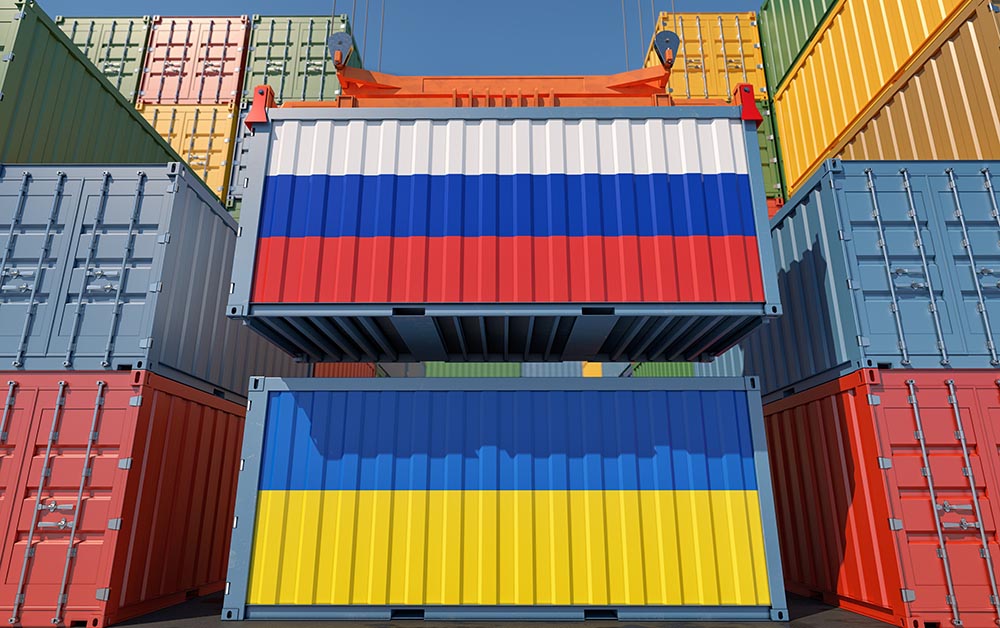After more than a month into the conflict in Ukraine, global distribution systems continue to be impacted by the war. Conditions are fluid and constantly changing. Companies should watch for changing supply chain dynamics over the coming months as a wave of ripple effects from the war in Ukraine combines with other global events to disrupt global distribution and supply chain activity.
Shipments in and out of the Black Sea have been impacted by the conflict. Many maritime shipping companies refuse to move in and out of the war zone. Few maritime firms can afford to take Russian goods because of sanctions risk, and insurers are not willing to cover those ships. In addition, Russian-flagged ships are not being allowed to dock in most global ports.
The impact on the global supply chain reaches far beyond transportation. Impacts on the physical ability of Ukraine to export goods out of the country is problematic, but global sanctions hampering or cutting off Russia’s ability to export items further expands the impact. Those combined effects have impacted nearly 12% of global oil exports, 31% of global wheat exports, and varying degrees (3% to 25%) of certain global metals markets.
Companies in Europe are feeling the direct impact because they sourced many of their primary metals and materials out of Ukraine and Russia. With those supplies cut off, they must find alternative sources from South America, Africa, Australia, and North America. It takes time to find suitable sources, and those supply chains are being disrupted.
The ripple effects extend to the US as well. Competition for metal products is increasing the cost of purchasing those items (aluminum, copper, nickel, platinum, palladium, titanium, etc.) and it is likely to slow down aspects of the US supply chain and push operating costs higher. When supplies are available, they are expensive, and the cost to move them is elevated.
Even in areas where global alternatives exist, there is a thin line between successfully keeping supply chains intact and flowing versus being out of stock and losing business from product shortages because of an additional disruption. As other events take place around the world, those thin line supply chains break down, and larger global crises occur.
For instance, China has experienced a wave of COVID outbreaks across key production markets near Shenzhen, Shanghai, Hong Kong, and Beijing. The Chinese Government continues to maintain versions of a “zero-COVID case policy” and nearly 75 million people were forced into lockdowns recently as a result. The impact to US manufacturing supply chains and slowing of goods moving into the US is significant.
Further, a temporary worker lockout took place with Canadian Pacific at a time when the US supply chain was looking for critical shipments of fertilizers, grains, petroleum and petroleum products, metals, and raw materials, etc. For those supply chains that were already experiencing some shortages and pressure from the war in Ukraine, this temporary work stoppage created further disruption.
Lastly, in the petroleum sector, supplies are running close enough that a small attack on a Saudi Arabian refinery sent West Texas Intermediate prices up $7.90 in a single day to $112.60 on March 21. That type of volatility is taking place across many supply chains right now.
The only certainty in the current global supply chain environment is that uncertainty will continue. Even after fighting has stopped in Ukraine, the deep impacts on the global supply chain will still be felt. Sanctions could last years, depending on how the war is ultimately resolved and the global supply chain will have to continue to search for suitable alternatives and substitutes.
The team at MarksNelson is monitoring the latest on global supply chain issues to help our clients manage the current situation and plan for what’s to come.

